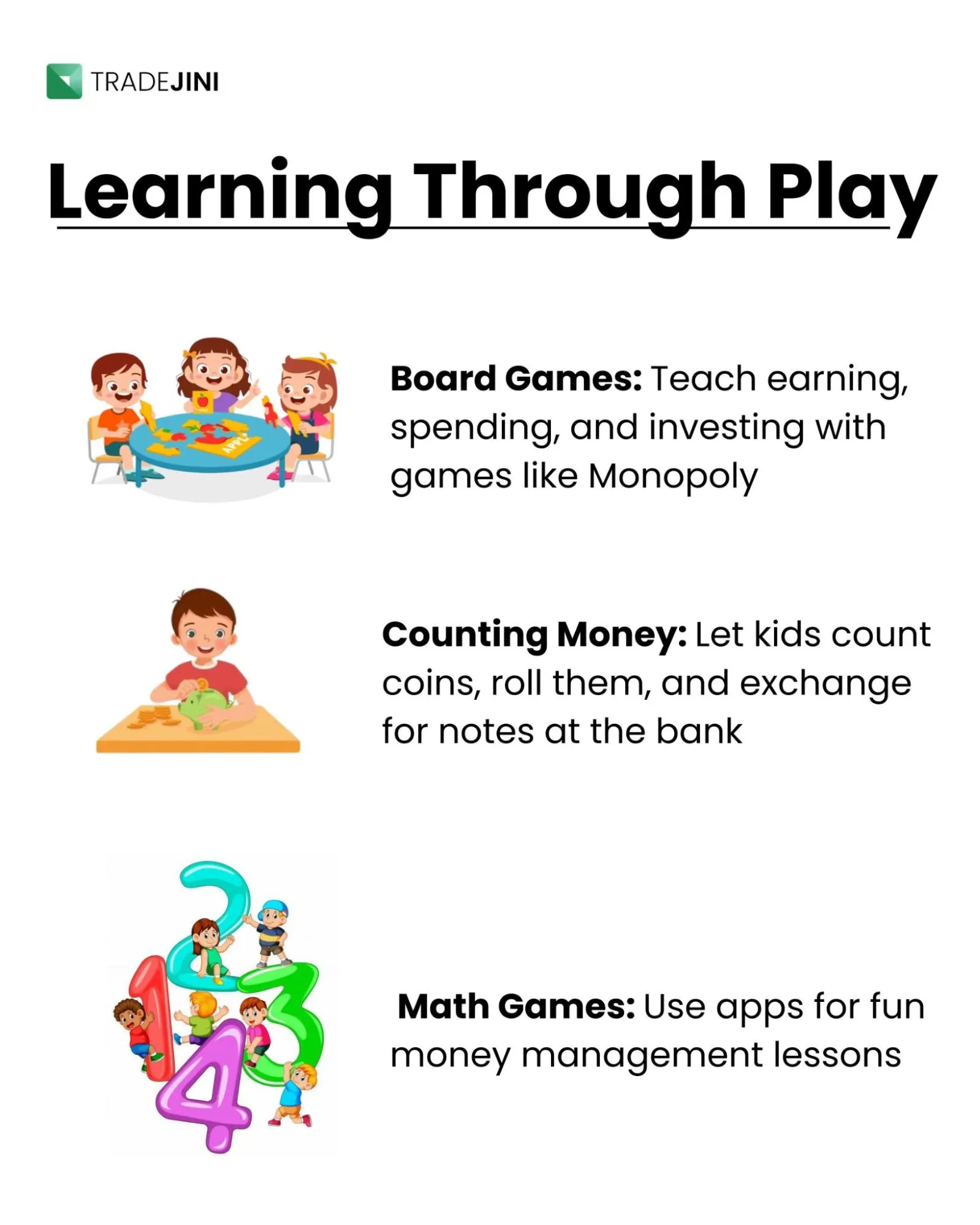Teaching Kids Healthy Spending and Smart Saving
_11zon.webp?alt=media&token=d30f1f22-5798-47a1-9023-de5b7243e919)
Why wait until adulthood to learn about money? For kids aged 8-10, every allowance, gift, or pocket-money moment is a chance to build smart financial habits. It’s not just about numbers. It is about understanding choices, setting goals, and realizing that every rupee has a purpose. Let’s make money lessons fun, relatable, and something they will carry for life.
Smart Spending, Not Splurging
Ever noticed how kids start picking up on brands and trends around this age? That’s peer pressure creeping in. It’s a great time to talk about the difference between 'wants' and 'needs'. Next time they ask for something, turn it into a conversation: ‘Is this something you need or something you want right now?’ This helps build critical thinking about money without making it feel like a lecture.
It’s also important to discuss how advertisements and branding can influence spending habits. Encourage kids to think about their choices by weighing options—considering quality, price, and necessity. If they ask for something that doesn’t align with your family’s financial values, explain your reasoning clearly, reinforcing that money decisions are tied to priorities. This helps build critical thinking about money without making it feel like a lecture.
Developing Smart Saving Habits
Teaching kids the importance of saving early can set them up for future financial success. Help them start by setting small, achievable goals:
- Set savings goals for something they want, like a toy or a new book.
- Create a simple chart to track their progress—it’s a visual way to show how their savings grow.
- Encourage them to save a portion of any pocket money, birthday gifts, or earnings from chores.
Basic Budgeting
Introducing Basic Budgeting Budgeting doesn’t have to be complicated—it’s simply about making choices with money. While teaching financial literacy is important, budgeting is important too, as it helps you understand your child with knowledge.
-
Needs vs. Wants: Discuss the difference between what they need (like school supplies) and what they want (like candy or toys).
-
Allowance Planning: If they receive an allowance, break it into categories—some for spending, some for saving, and some for giving.
-
Planning Purchases: Before spending money, encourage your child to think about whether the item is worth the price and if they could find a better deal.

Making Money Feel Real
Kids at this age are naturally curious and full of ideas. Why not channel that energy into simple activities that show how money works? Encourage small tasks like helping around the house for a reward or running a lemonade stand. The goal isn’t to make them mini-entrepreneurs overnight, it's about connecting effort to earnings and building a sense of responsibility.
Opening a Bank Account
By age 10, many kids are ready to take little steps ahead; opening their first bank account. This milestone not only introduces them to money management but also lays the foundation for financial responsibility.
Start by visiting the bank together and explaining how an account works—how they can deposit money, earn interest, and track their savings. Make it a hands-on experience by letting them fill out forms (with your help) and showing them how their balance grows over time.
In today’s digital age, it's equally important to introduce kids to online banking and digital wallets. Walk them through logging into their account securely, checking their balance, and understanding transaction histories. Explain how transferring money or making online purchases means real money is leaving their account—it’s not magic money just because they didn’t use cash.
Setting financial goals makes the process even more meaningful. Encourage them to save for something special, like a new gadget or a hobby item, and discuss longer-term goals like contributing to their education fund. This not only makes saving fun but also teaches delayed gratification.
Building a Habit of Giving
It’s never too early to instill the value of generosity.
- Encourage kids to set aside a small part of their money for charity or community projects.
- Let them choose causes they care about—like animal shelters or local NGOs—so they feel personally connected to their giving.
- Take them along when donating money or volunteering, helping them see the impact of their contributions.
Final Thoughts
Financial literacy is a journey that starts young. At Tradejini, we believe that by empowering children with money skills early, we're preparing them for a future of smart financial decisions. This is the time to improve financial literacy, so kids are ready for the challenges and opportunities that come with managing money.
So, let’s make money talk a part of everyday life—simple, fun, and meaningful!
_11zon.webp?alt=media&token=bd974821-aee4-43a5-b467-01d1a67a570b)
_20_11zon.webp?alt=media&token=6659b2e6-927e-42de-8375-e227e579f556)
_11zon.webp?alt=media&token=a8f3f55c-dc70-4d42-844e-6874ceff69ce)
_11zon.webp?alt=media&token=a05d2324-cace-44ed-a35f-50f9e63be9c3)
_11zon.webp?alt=media&token=14cd8f87-8add-49ce-84f1-ca07a0c52b0c)





